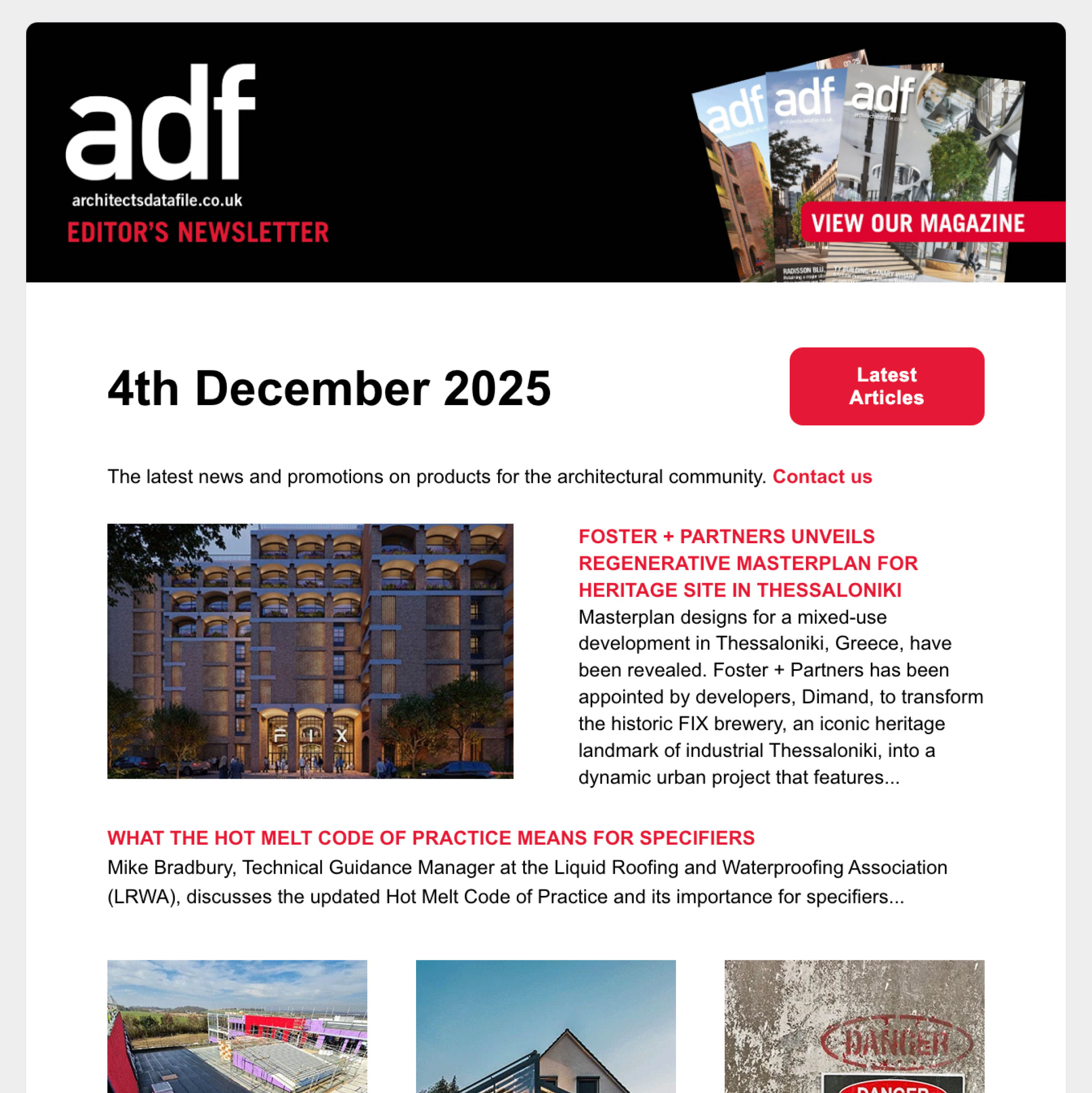On the outskirts of Witney, architects PRC are helping Richmond Care Villages create a whole new village – just for the retired, as Steve Menary reports
Getting old is hard to avoid and retirement is inevitable. The alternatives are not so appealing but retirement housing has often followed a fairly routine format and design. Richmond Care Villages (RCV) are looking to change that as the group expands its portfolio of care villages to eight with the help of architects PRC.
“Our aspirations were for a quality development, we are trying to achieve a community,” says RCV Head of Development Albert Josephs. “For the design, it’s a conscious decision to stay away from anything institutional. We could cheapen the product by reducing the detail but we will never go down that route.”
Gary Symes, the project architect with PRC, describes the design as akin to “domestic meets country club.”
Contractor BAM Construct started work on site in the summer of 2014 and the entire development must be complete by April 2016 – a decade after PRC first became involved with the project.
The scheme is being built on a four hectare site at Thorney Leys outside Witney. The plot was formerly a mix of brownfield land, including a number of storage sheds, and greenfield land. When RHC recruited PRC as architect back in 2006 to gain outline permission, that greenfield element could have made securing planning permission difficult.
However, proposals for an office development had previously been secured for the site, but never utilised. And, while the new scheme might appear residential, the care village will also create around 150 full and part-time jobs.
As the site had been identified for employment and commercial use, there was little opposition and PRC went on to secured detailed permission in 2008.
“That was quite a notable year,” explains Mr Symes wryly. “It had the direct effect that things came to a standstill.”
As the economy came out of the worst recession in generations, RCV revived plans for the scheme. “Difficult market conditions have come up but we have tried to retain the quality,” adds Mr Josephs.
PRC went back to West Oxfordshire District Council to gain a second detailed permission that included some changes for the village, which will have 240 residents spread across three clusters. These clusters were partly dictated by the presence of a residential development across Deer Park Road, which runs past the site.
Mr Symes explains:
“There had to be an open view from the exit of the existing residential site across the road, so we had two clusters but the whole ethos had to be modelled around a village centre. The local authority also wanted the tallest element to be overlooking the roundabout as a feature building.”
That feature building is C2 in the northern cluster, which comprises individual one or two-bedroom apartments, which are all self-contained with fully fitted kitchens and wet-rooms.
There are a total of four blocks in this cluster. Blocks A and B feature six flats apiece, while C1 has nine flats and there are a dozen in C2. These units will have a nurse on call at all times and are designed to meet the Disabled Discrimination Act, but are expected to attract able-bodied residents.
Work on the northern cluster is due for completion in late autumn 2015, but has only just started on the southern cluster, which is a mixture of two and three-storey buildings in five blocks. Block D features just two units, but Block E has 22. In Block F there will be four units and seven in Block G, while Block H will feature 14 flats. All will be one and two-bed units and very similar to the northern section.
The main focus of the development is the Village Care Centre (VCC), which will be aimed at different residents. Units will include en-suite bedrooms for dependants and cater for around 150 people, who will mostly have more needs than those in the northern and southern clusters. This three-storey building with a basement will include a swimming pool, communal dining areas, a hairdressers, gym and bowling green. The VCC was one area of the design that grew between PRC securing the first and second detailed approvals with the inclusion of a wellness centre in the basement of the main building in the subsequent iteration.
Mr Symes explains:
“The parameters like heights were set in the outline but we introduced greater use of roof space. In the second consent, we also introduced a couple of additional features which helped make better use of the site like more apartments around the common core.
“Each of the two groups are clustered around this central space. There is now more walk-up units at ground level, which creates more of a street scene. We have capitalised on that wherever possible.
“There are also as many south-facing units at ground level as possible so that people can have a patio. It also keeps it discrete. We don’t want anyone to feel overlooked or pressurised, so that people have their own sense of space.
“One advantage we have with that is the existing vegetation, which has grown since 2006 and is a real benefit. The site is quite well screened and only a few roofs will emerge. We have also maintained pedestrian access across the site in a more formal fashion, rather than just meandering across the site.”
At the front of the site is the Deer Park Road, the site is screened by healthy hedgerows, which have benefitted from the decade long-gap between submission of an outline permission and work getting underway. To the rear of the site, there are farmers’ fields that are visible to the residents.
Mr Josephs adds:
“The elevational treatments are quite important to us too as that is the first thing that you see when you enter the site. The quality and design of that space is important. We spend a fortune on landscaping.”
The development itself has been christened Coral Springs because there is an actual spring at the centre of the site. On completion, this will form a feature element. At the bottom of the site, there will be a wildlife area with rainwater attenuation to store surface water run-off. For the actual materials, West Oxfordshire District Council insisted that the design was in keeping with the local vernacular.
Mr Symes continues:
“The council had their own design guide according to locality and depending on the indigenous construction. They said this is your palette that you need to come within. “We went for a traditional-looking scheme with some contemporary overtones. We have some steeply pitched roofs, stone, render and some brick. There are also some elements of weatherboard to respect we have a semi-rural environment here. Once we get across the A40, it is rural and we were paying homage to that.
“Diminishing courses of stone slate is the traditional way but we are using more modern materials to reflect the heritage of the area. There are a couple of different design features that make it different; there’s uniqueness about the gables, for example.”
On the roofs, the council wanted the development to include natural stone and natural slate, but negotiations between the two sides managed to produce a sensible – and more cost-effective – compromise. The materials that have been specified include a traditional Bekstone, while the elevations will feature render.
“There is a mixture of three external facings,” says BAM Construct Pro-ject Manager Mick Lymn.
All the roofs are slate and we have a lot of cast feature stone on all the lintels, sills and the quoins.” All of the windows and doors are timber, while internally BAM Construct is using Polytherm blocks sourced from Spain.
“This is the first time that BAM Construct as a company has used this product as far as I know,” adds Mr Lymn.
RCV has five existing care villages and Coral Springs is one of three more in the pipeline. For this project, RHC went out to tender and BAM Construct triumphed ahead of bids from Bouygues, Brookfield Multiplex and GB Building Solutions.
Since the award, work has gone to plan so well in Witney that RHC has eschewed the competitive tender route for the next retirement village project in Evesham. Instead, RCV has opted to negotiate a construction contract with BAM Construct.
This scheme, like the rest of the RCV pipeline will again be designed by PRC as the pair continue to combine to create a new, more luxurious option to retirement living.



